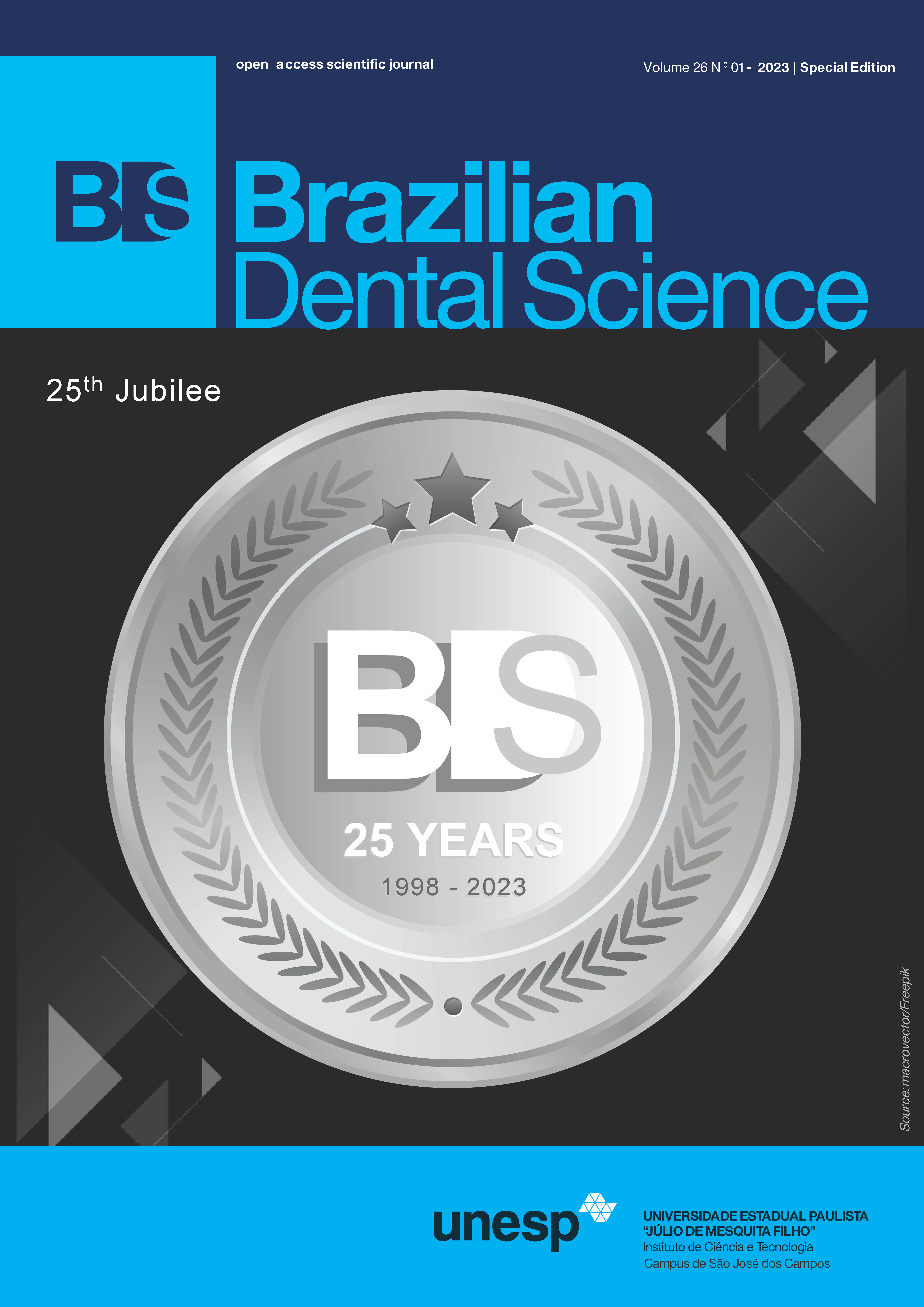Relationship between myofascial pain and facial types: an observational study
DOI:
https://doi.org/10.4322/bds.2023.e3725Resumo
Temporomandibular disorder (TMD) is a term that covers a number of clinical problems involving the masticatory muscles, TMJ and all associated structures leading to signs and symptoms such as jaw pain, otalgia, headaches and limitation of function. In this context, TMD has been related to facial type and there are three distinct facial types (euryprosopic, mesoprosopic, and leptoprosopic). Objective: The aim of this study was to investigate the correlation between myofascial pain and facial types classified by the RDC/TMD Axis I. Material and Methods: this study was composed of 64 women aged between 12 and 49 years, using data obtained from two institutions. We used the anthropometric methodology, which meets the criteria of simplicity and reliability. We also applied the Brugsh Facial Index. The individuals were classified as euryprosopic (51.56%), mesoprosopic (12.50%) and leptoprosopic (35.94%), without statistical significance among the groups (p=0,3492). Results: there is no statistical difference between the age groups (p=0.2976) and no association between facial type and age range. Conclusion: this study found that there was a correlation between myofascial pain and facial types, with the predominance of euryprosopic faced women aged between 20 and 29 years when compared with other facial types and other age groups.
KEYWORDS
Temporomandibular joint dysfunction syndrome; Anthropometric methodology; Mandibular disorders; Myofascial pain; Orofacial pain.
Downloads
Downloads
Publicado
Como Citar
Edição
Seção
Licença
TRANSFERÊNCIA DE DIREITOS AUTORAIS E DECLARAÇÃO DE RESPONSABILIDADE
Toda a propriedade de direitos autorais do artigo "____________________________________________________________________" é transferido do autor(es) para a CIÊNCIA ODONTOLÓGICA BRASILEIRA, no caso do trabalho ser publicado. O artigo não foi publicado em outro lugar e não foi submetido simultaneamente para publicação em outra revista.
Vimos por meio deste, atestar que trabalho é original e não apresenta dados manipulados, fraude ou plágio. Fizemos contribuição científica significativa para o estudo e estamos cientes dos dados apresentados e de acordo com a versão final do artigo. Assumimos total responsabilidade pelos aspectos éticos do estudo.
Este texto deve ser impresso e assinado por todos os autores. A versão digitalizada deverá ser apresentada como arquivo suplementar durante o processo de submissão.




























